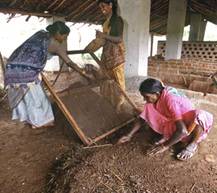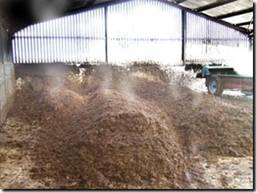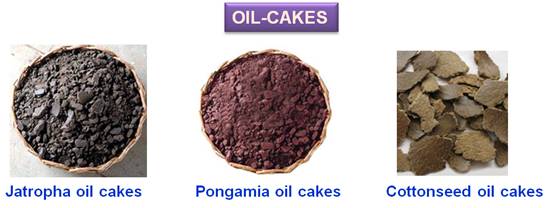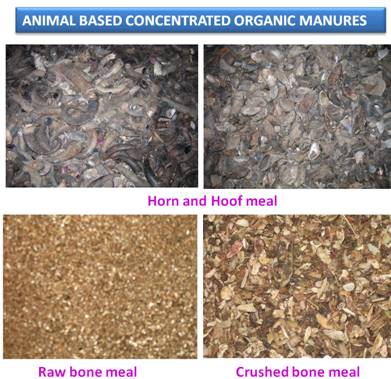 |
||||||||||||||||||||||||||||||||||||||||||||||||||||||||||||||||||||||||||||||||||||||||||||||||||||||
Components |
| Home | Nutrient Management | Weed Management | Pest Management | Disease Management | Gallery | Contact |
|
Special Technologies |
||||||||||||||||||||||||||||||||||||||||||||||||||||||||||||||||||||||||||||||||||||||||||||||||||||
| ORGANIC FARMING :: Manures | ||||||||||||||||||||||||||||||||||||||||||||||||||||||||||||||||||||||||||||||||||||||||||||||||||||||
Organic Farming - Introduction |
Biodynamic Farming |
|||||||||||||||||||||||||||||||||||||||||||||||||||||||||||||||||||||||||||||||||||||||||||||||||||||
MANURES Manures are plant and animal wastes that are used as sources of plant nutrients. They release nutrients after their decomposition. The art of collecting and using wastes from animal, human and vegetable sources for improving crop productivity is as old as agriculture. Manures are the organic materials derived from animal, human and plant residues which contain plant nutrients in complex organic forms. Naturally occurring or synthetic chemicals containing plant nutrients are called fertilizers. Manures with low nutrient, content per unit quantity have longer residual effect besides improving soil physical properties compared to fertilizer with high nutrient content. Major sources of manures are:
Manures can also be grouped, into bulky organic manures and concentrated organic manures based on concentration of the nutrients. Bulky organic manures Bulky organic manures contain small percentage of nutrients and they are applied in large quantities. Farmyard manure (FYM), compost and green-manure are the most important and widely used bulky organic manures. Use of bulky organic manures has several advantages: Farmyard manure Farmyard manure refers to the decomposed mixture of dung and urine of farm animals along with litter and left over material from roughages or fodder fed to the cattle. On an average well decomposed farmyard manure contains 0.5 per cent N, 0.2 per cent P2O5and .0.5 per cent K2O.The present method of preparing farmyard manure by the farmers is defective. Urine, which is wasted, contains one per cent nitrogen and 1.35 per cent potassium. Nitrogen present in urine is mostly in the form of urea which is subjected to volatilization losses. Even during storage, nutrients are lost due to leaching and volatilization. However, it is practically impossible to avoid losses altogether, but can be reduced by following improved method of preparation of farmyard manure. Trenches of size 6 m to 7.5 m length, 1.5 m to 2.0 m width and 1.0 m deep are dug. All available litter and refuse is mixed with soil and spread in the shed so as to absorb urine. The next morning, urine soaked refuse along with dung is collected and placed in the trench. A section of the trench from one end should be taken up for filling with daily collection. When the section is filled up to a height of 45 cm to 60 cm above the ground level, the top of the heap is made into a dome and plastered with cow dung earth slurry. The process is continued and when the first trench is completely filled, second trench is prepared.
Sheep and Goat Manure The droppings of sheep and goats contain higher nutrients than farmyard manure and compost. On an average, the manure contains 3 per cent N, 1 per cent P2O5 and 2 per cent K2O.It is applied to the field in two ways. The sweeping of sheep or goat sheds are placed in pits for decomposition and it is applied later to the field. The nutrients present in the urine are wasted in this method. The second method is sheep penning, wherein sheep and goats are kept overnight in the field and urine and fecal matter added to the soil is incorporated to a shallow depth by working blade harrow or cultivator or cultivator. Poultry Manure The excreta of birds ferment very quickly. If left exposed, 50 percent of its nitrogen is lost within 30 days. Poultry manure contains higher nitrogen and phosphorus compared to other bulky organic manures. The average nutrient content is 3.03 per cent N; 2.63 per cent P2O5 and 1.4 per cent K2O. Concentrated Organic Manures Concentrated organic manures have higher nutrient content than bulky organic manure. The important concentrated organic manures are oilcakes, blood meal, fish manure etc. These are also known as organic nitrogen fertilizer. Before their organic nitrogen is used by the crops, it is converted through bacterial action into readily usable ammoniacal nitrogen and nitrate nitrogen. These organic fertilizers are, therefore, relatively slow acting, but they supply available nitrogen for a longer period. Oil cakes After oil is extracted from oilseeds, the remaining solid portion is dried as cake which can, be used as manure. The oil cakes are of two types:
The average nutrient content of different oil-cakes is presented in the following table. Average nutrient content of oil cakes
Other Concentrated Organic Manures Blood meal when dried and powdered can be used as manure. The meat of dead animals is dried and converted into meat meal which is a good source of nitrogen. Average nutrient content of animal based concentrated organic manures is given as follows.
Average nutrient content of animal based concentrated organic manures
Source
|
||||||||||||||||||||||||||||||||||||||||||||||||||||||||||||||||||||||||||||||||||||||||||||||||||||||
Activities |
Organic Certification |
|||||||||||||||||||||||||||||||||||||||||||||||||||||||||||||||||||||||||||||||||||||||||||||||||||||
Marketing |
||||||||||||||||||||||||||||||||||||||||||||||||||||||||||||||||||||||||||||||||||||||||||||||||||||||
| Home | Nutrient Management | Weed Management | Pest Management | Disease Management | Gallery | Contact | |
||||||||||||||||||||||||||||||||||||||||||||||||||||||||||||||||||||||||||||||||||||||||||||||||||||||
© All Rights Reserved. TNAU-2008. |
||||||||||||||||||||||||||||||||||||||||||||||||||||||||||||||||||||||||||||||||||||||||||||||||||||||



